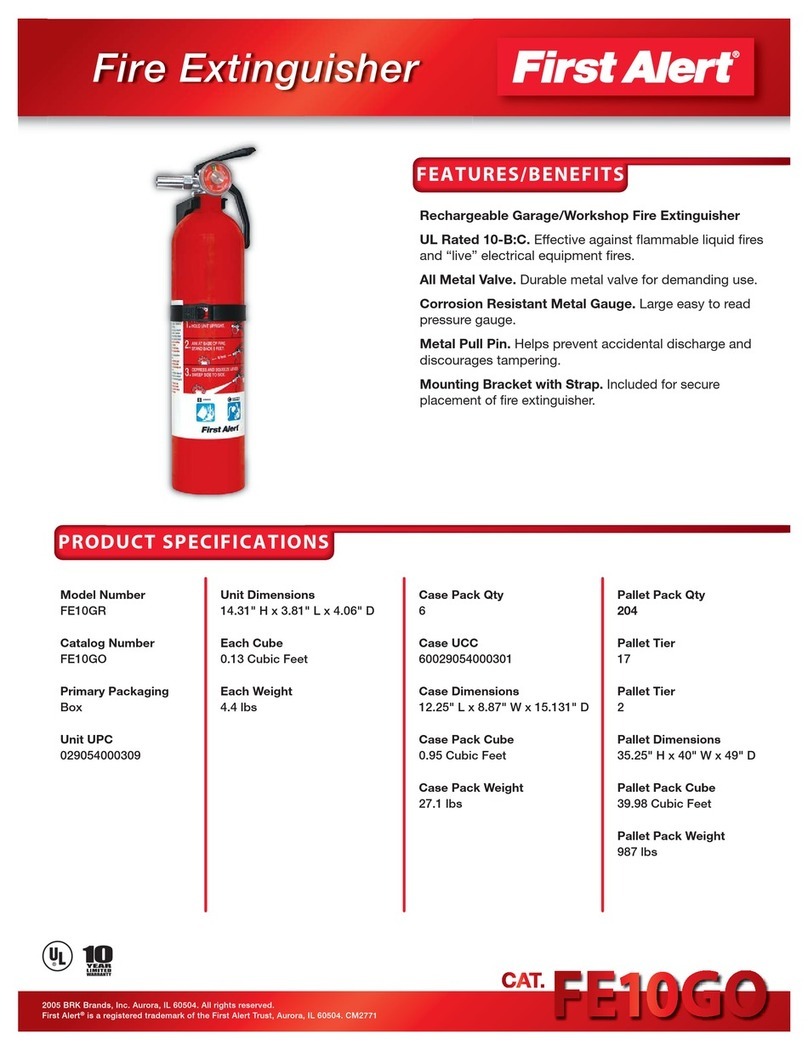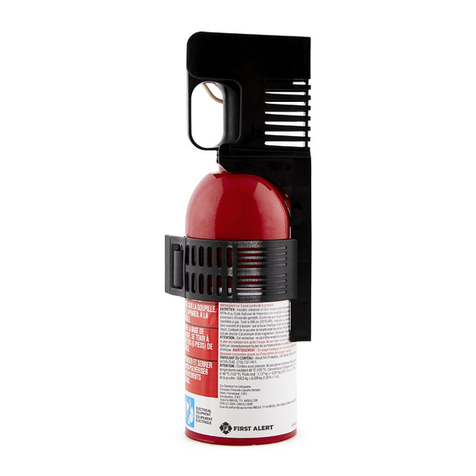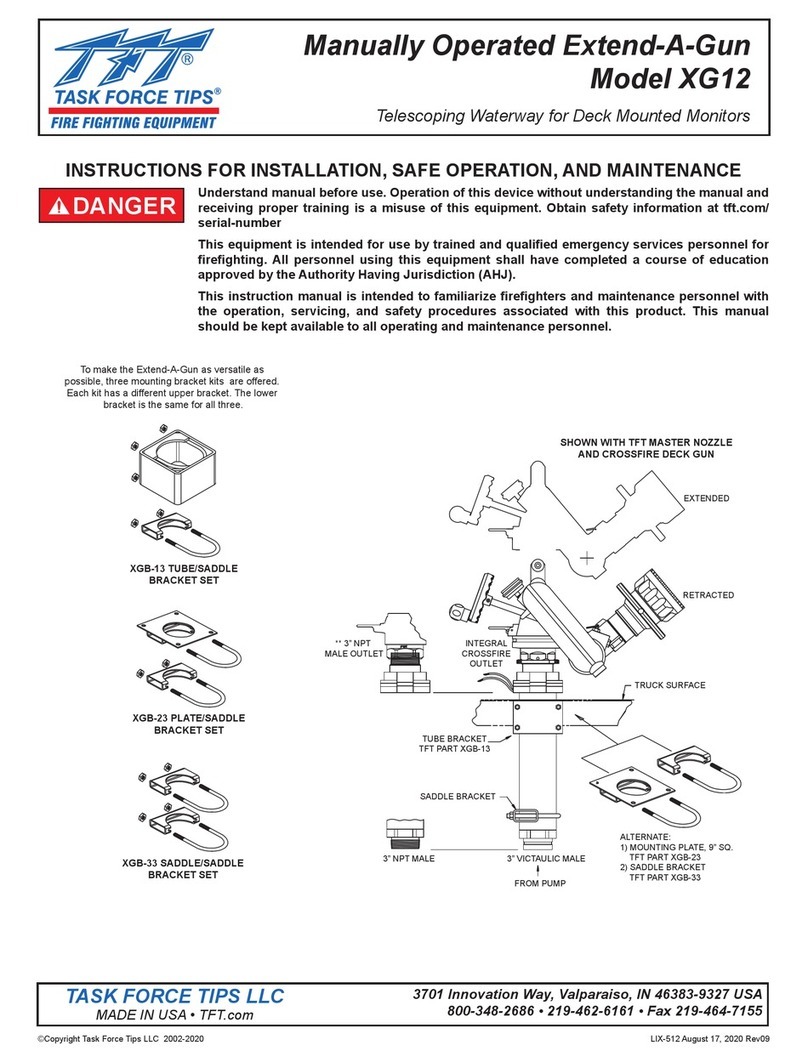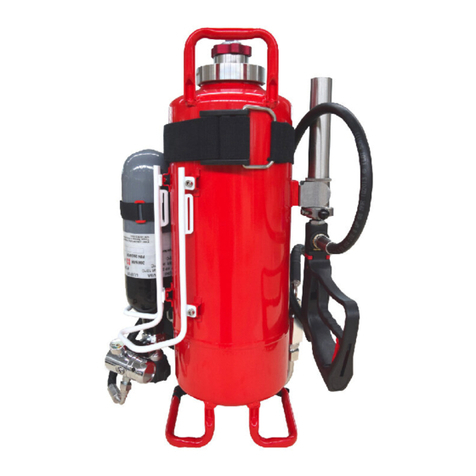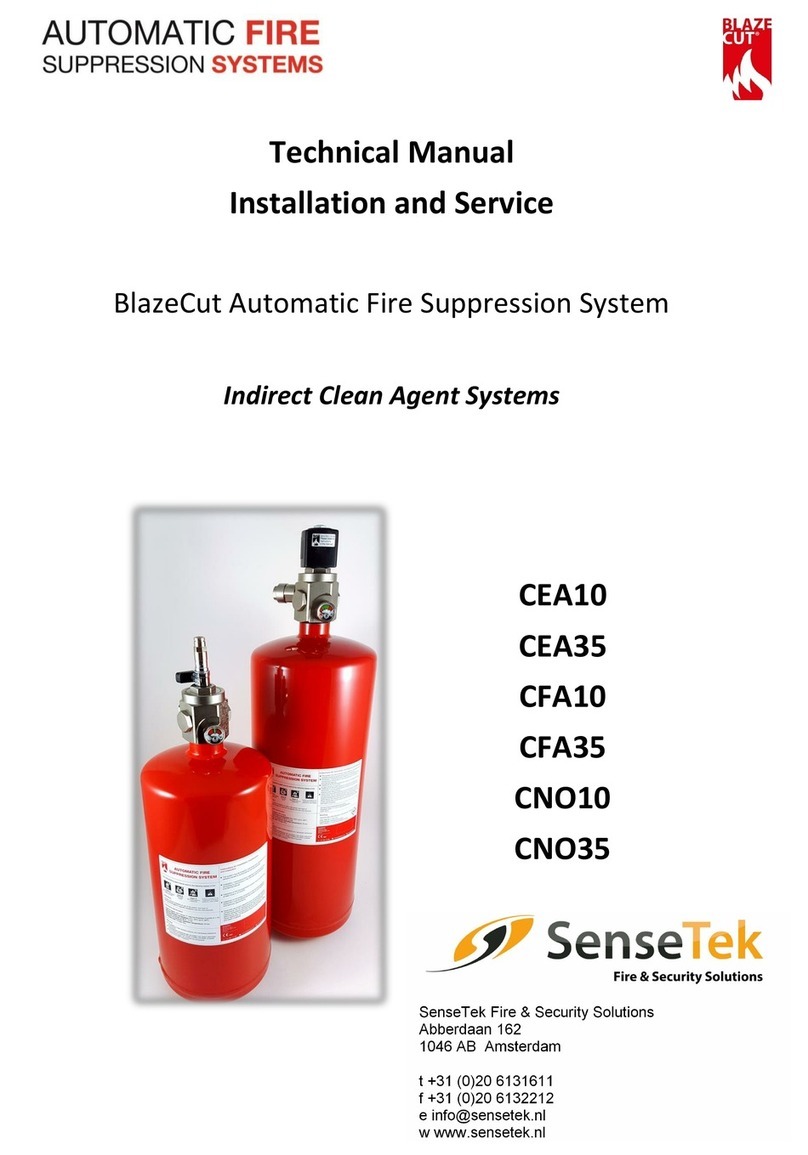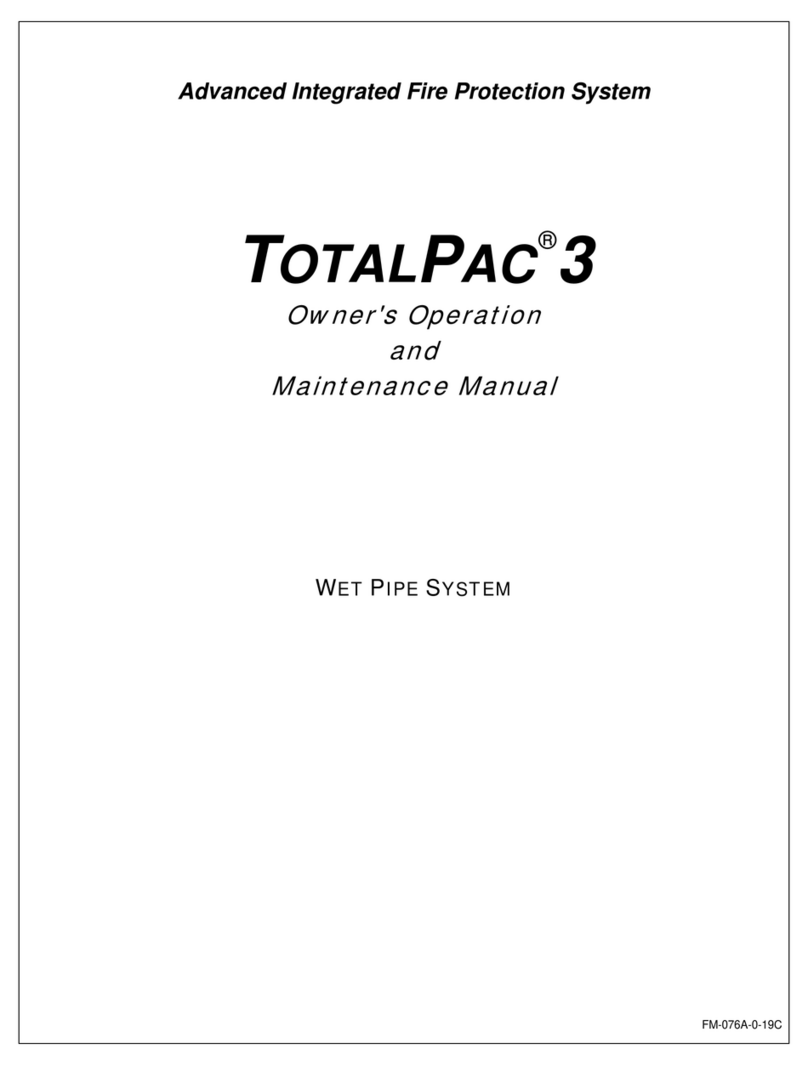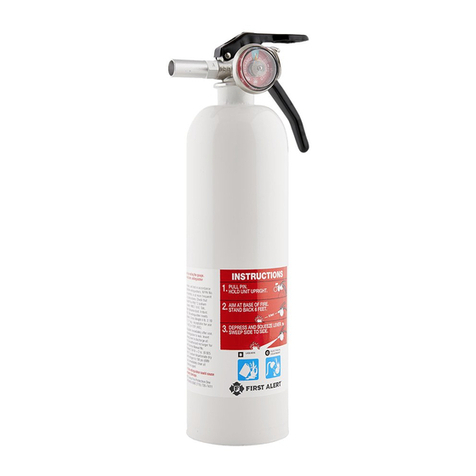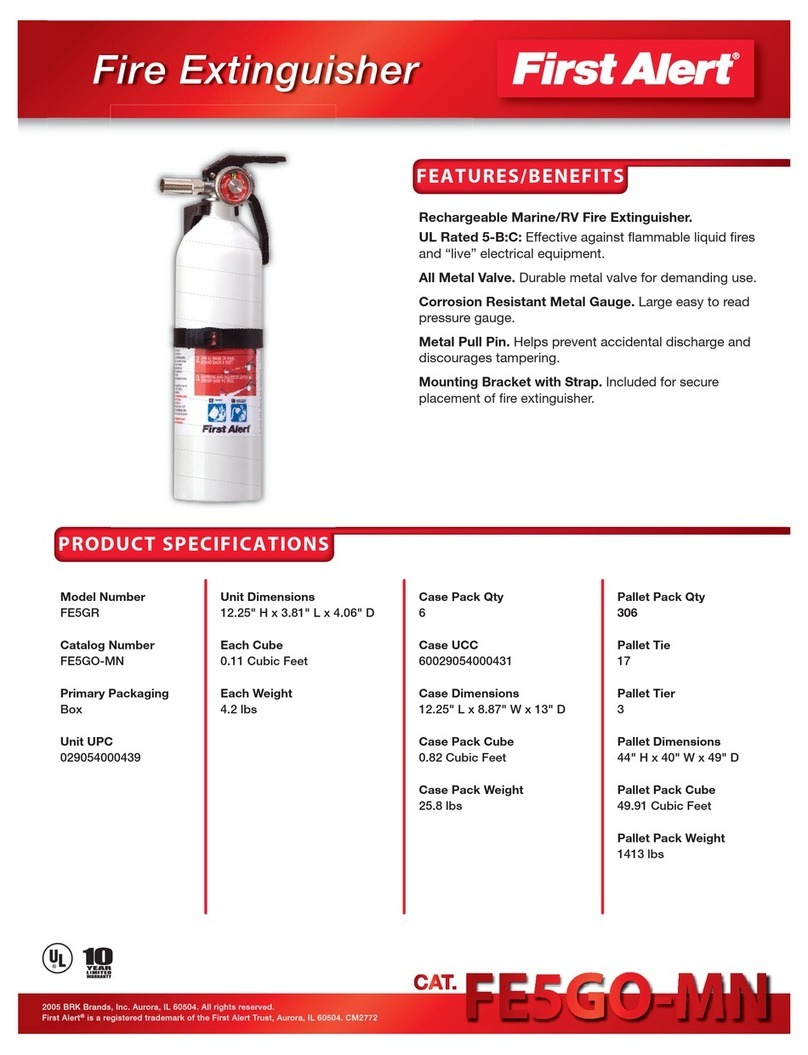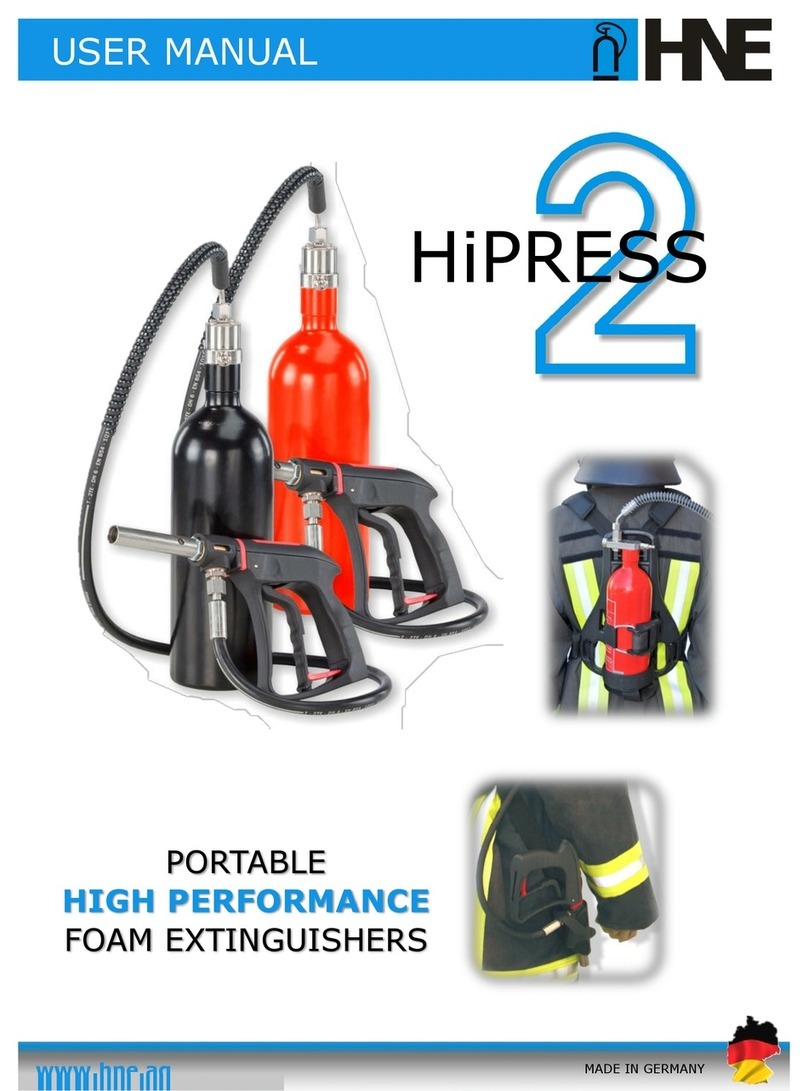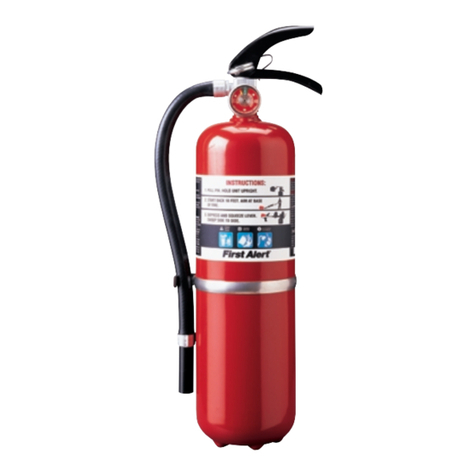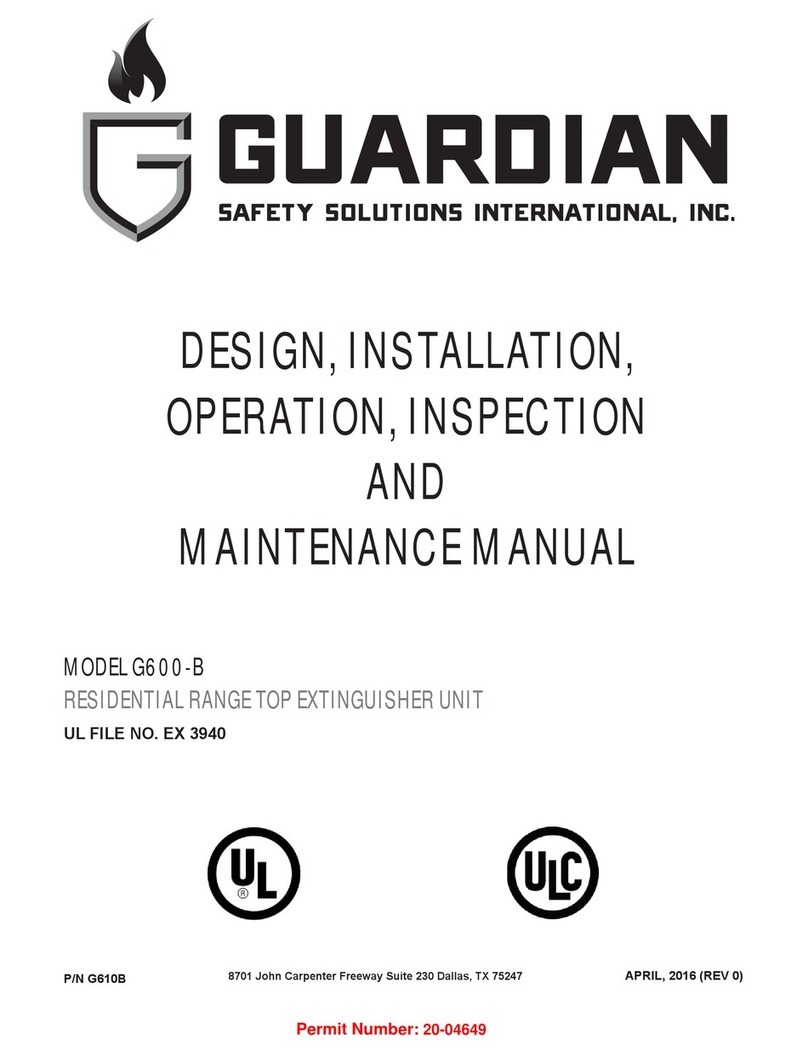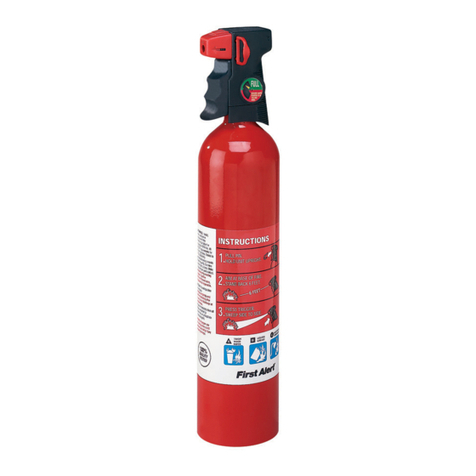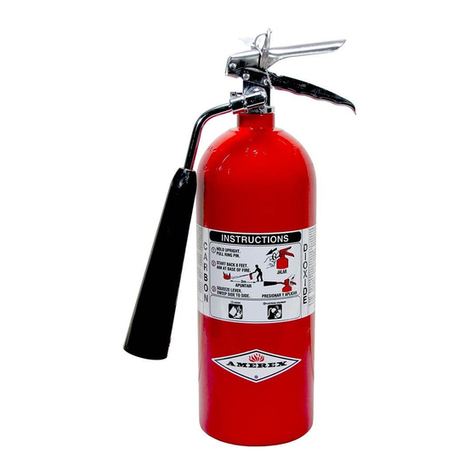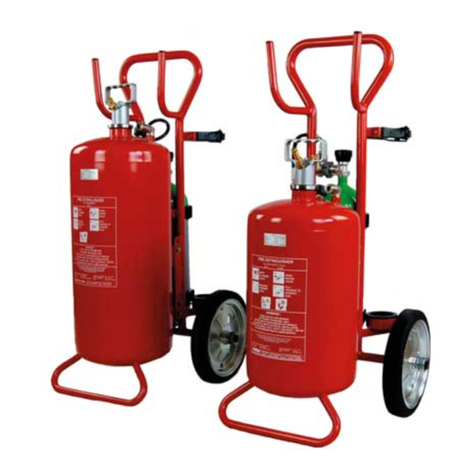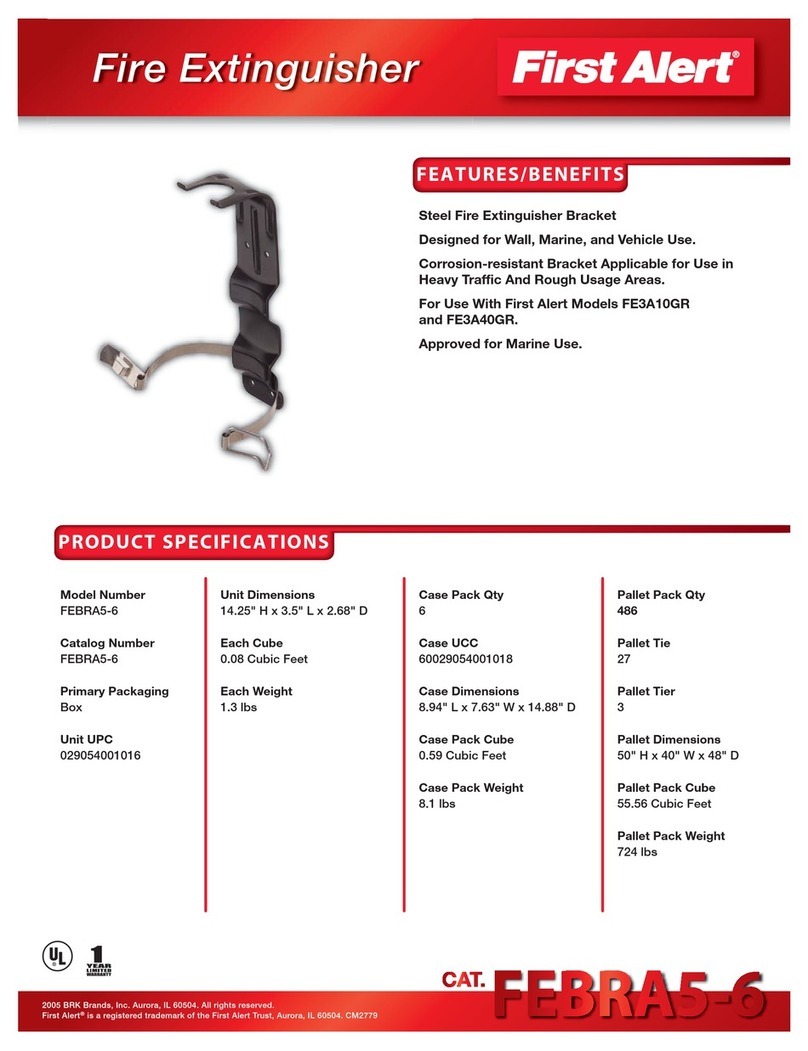
Page 3 of 6
Integrated Compressed Air Foam System
A
General Section
FM-0723-0-7H
Foam Supply
Foam concentrate is stored inside a stainless steel pressure
vessel type tank as described in the FOAM SUPPLY
SECTION G .
There are two interconnection lines provided on all foam
storage tanks. One connection is used to pressurize the
foam storage tank with compressed air
3
on alarm
condition, the other to provide foam concentrate to the mixing
chamber
2
. Piping between the foam storage tank and the
ICAF system is factory prepared according to the installation
arrangement and is supplied with the system.
System Supervision
Refer to MECHANICAL OPERATION SECTION E TRIM SCHEMATIC
and AIR SUPPLY SECTION F .
The release control panel supervises the air and water
supplies to insure system's reliability at all times.
A high pressure sensor (V7) is provided to supervise cylinder
bank pressure. The intent of this device is to provide a
supervisory signal if the cylinder bank pressure goes under
the minimum pressure required to provide air supply for the
specified discharge time. A cylinder bank pressure under
2200 psi (15,168 kPa) will cause the control panel to go into
supervisory condition.
An alarm pressure switch (B10) is provided with an alarm test
valve (B5). The alarm pressure switch is operated through
the system's water alarm line when the system is discharged.
System actuation, manual or automatic, will cause the control
panel to go into alarm and water flow conditions.
The main control valve (B1) is supervised from abnormal
position by an integrated supervisory switch. The
supervisory switch supervises the valve in an open position
and will cause the control panel to go into supervisory
condition in case the main control valve is not at fully open
position.
Release Systems
Refer to MECHANICAL OPERATION SECTION E TRIM SCHEMATIC.
The system can be activated manually, electrically using
solenoid valve or pneumatically using a pilot line. When
electrically activated, the release solenoid valve is controlled
by a release control panel listed for releasing and compatible
with the solenoid valve.
អ
អអ
អElectric Failsafe Release
Electrically controlled ICAF system is equipped with a
three-way solenoid valve (R2) controlled by the release
control panel, and requires external detection devices
(refer to INSTALLATION AND OPERATION MANUAL of the
release control panel for list of compatible devices).
In fire condition, when the detection condition is satisfied,
the release control panel energizes the three-way
solenoid valve (R2). The pneumatic control line is then
pressurized, causing the pneumatically activated control
valves for water (B7), air (A1) and foam (F1) to open
simultaneously, generating CAF through a piping system
into the discharge devices covering the protected area.
The CAF discharge is maintained if the AC power fails
and the battery backup expires while the system is
operating, and continue flowing until AC power is restored
or the system is manually shut-off.
អ
អអ
អElectric Release
Electrically controlled ICAF system is equipped with a
three-way solenoid valve (R2) controlled by the release
control panel and requires external detection devices
(refer to INSTALLATION AND OPERATION MANUAL of the
release control panel for list of compatible devices).
In fire condition, when the detection condition is satisfied,
the release control panel energizes the three-way
solenoid valve (R2). The pneumatic control line is then
pressurized, causing the pneumatically activated control
valves for water (B7), air (A1) and foam (F1) to open
simultaneously, generating CAF through a piping system
into the discharge devices covering the protected area.
អ
អអ
អPneumatic Release
Pneumatically controlled ICAF system requires a
pneumatic release system, equipped with fixed
temperature releases, and/or pilot heads.
Release trim, for pneumatically controlled ICAF system
utilizes a pneumatic actuator (R5) normally held closed by
pressure maintained in the pneumatic release system.
The air supply for the pneumatic release piping system
could be provided by the cylinders bank installed as part
of the ICAF system unit or by external air supply. It is
recommended to provide Inspectors Test Connections on
the release system.
In fire condition, the low pressure resulting from the
operation of the pneumatic pilot line release system
causes the pneumatic actuator (R5) to open. The
pneumatic control line is then pressurized, causing the
pneumatically activated control valves for water (B7),
air (A1) and foam (F1) to open simultaneously, generating
CAF through a piping system into the discharge devices
covering the protected area.
អ
អអ
អManual Release
For each release system type, in case of malfunction of
the release control panel or the release line, an
emergency release valve (R1) is provided for manual
override by the user.
Manual ICAF system actuation is accomplished by turning
the manual release valve (R1) to EMERGENCY RELEASE
position (as identified on the front of the unit).
In fire condition, once the manual release valve (R1) is in
EMERGENCY RELEASE position, the pneumatic control line
is then pressurized, causing the pneumatically activated
control valves for water (B7), air (A1) and foam (F1) to
open simultaneously, generating CAF through a piping
system into the discharge devices covering the protected
area.
The discharge continues after the manual release
valve (R1) is returned to its NORMAL position.
